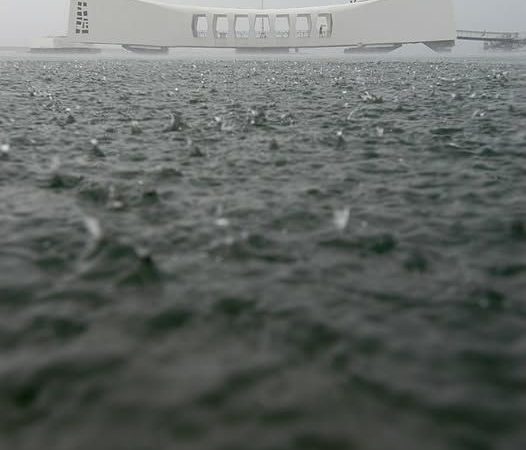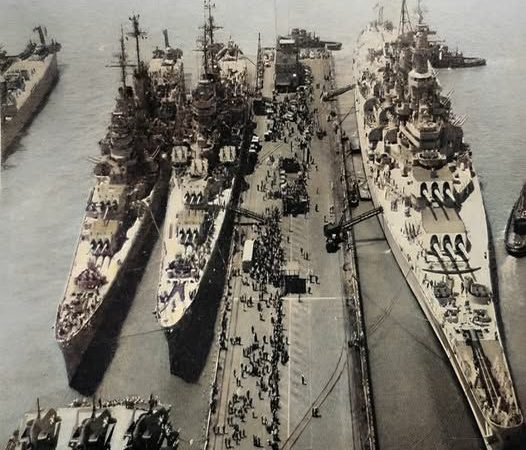Majestic Relics: Aerial View of the Decommissioned Battleship New Jersey and Knox Class Frigates at Puget Sound
On May 17, 1993, a striking aerial photograph captured a poignant moment in naval history: the decommissioned Battleship New Jersey (BB-62) and seven Knox-class frigates resting together at the Ship Intermediate Maintenance Facility in Puget Sound Naval Shipyard, Washington. This image provides a powerful snapshot of the end of an era for these storied vessels.

The Battleship New Jersey, a proud member of the Iowa-class, was a symbol of American naval strength throughout its service. Launched during World War II, it played a crucial role in the Pacific Theater, providing firepower that significantly contributed to Allied victories. After multiple recommissions and service in conflicts including the Korean and Vietnam Wars, the New Jersey’s decommissioning marked the end of its active naval career, leaving behind a legacy of valor and excellence.

Surrounding the New Jersey in the photograph are seven Knox-class frigates, which were the backbone of the U.S. Navy’s anti-submarine warfare efforts during the Cold War. These frigates, named after notable naval officers, were designed for a range of missions, from escort duties to anti-submarine operations. Their presence alongside the Battleship New Jersey in the image signifies a transition in naval priorities and technology.

The Ship Intermediate Maintenance Facility at Puget Sound Naval Shipyard was a hub for maintaining and updating the U.S. Navy’s fleet. The sight of these decommissioned ships moored together at this facility serves as a reminder of the cyclical nature of naval service, where ships are retired and new ones take their place, but the memories and contributions of these vessels remain timeless.

This aerial view not only captures a moment of historical significance but also evokes a sense of nostalgia for the era when these ships were active symbols of naval power and defense. It highlights the transformation and evolution of naval forces as they adapt to new challenges and technological advancements.




